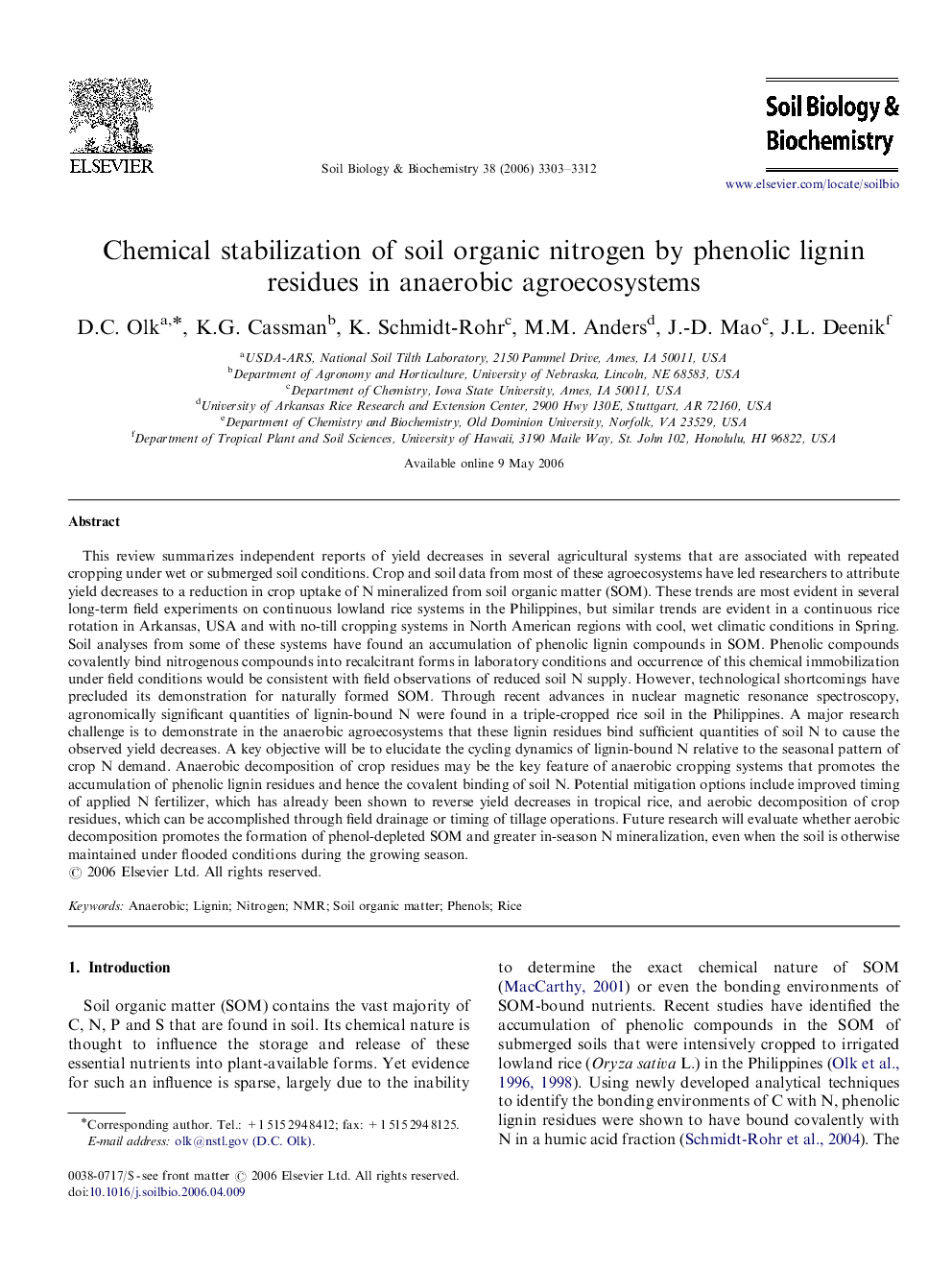| کد مقاله | کد نشریه | سال انتشار | مقاله انگلیسی | نسخه تمام متن |
|---|---|---|---|---|
| 2026008 | 1070016 | 2006 | 10 صفحه PDF | دانلود رایگان |

This review summarizes independent reports of yield decreases in several agricultural systems that are associated with repeated cropping under wet or submerged soil conditions. Crop and soil data from most of these agroecosystems have led researchers to attribute yield decreases to a reduction in crop uptake of N mineralized from soil organic matter (SOM). These trends are most evident in several long-term field experiments on continuous lowland rice systems in the Philippines, but similar trends are evident in a continuous rice rotation in Arkansas, USA and with no-till cropping systems in North American regions with cool, wet climatic conditions in Spring. Soil analyses from some of these systems have found an accumulation of phenolic lignin compounds in SOM. Phenolic compounds covalently bind nitrogenous compounds into recalcitrant forms in laboratory conditions and occurrence of this chemical immobilization under field conditions would be consistent with field observations of reduced soil N supply. However, technological shortcomings have precluded its demonstration for naturally formed SOM. Through recent advances in nuclear magnetic resonance spectroscopy, agronomically significant quantities of lignin-bound N were found in a triple-cropped rice soil in the Philippines. A major research challenge is to demonstrate in the anaerobic agroecosystems that these lignin residues bind sufficient quantities of soil N to cause the observed yield decreases. A key objective will be to elucidate the cycling dynamics of lignin-bound N relative to the seasonal pattern of crop N demand. Anaerobic decomposition of crop residues may be the key feature of anaerobic cropping systems that promotes the accumulation of phenolic lignin residues and hence the covalent binding of soil N. Potential mitigation options include improved timing of applied N fertilizer, which has already been shown to reverse yield decreases in tropical rice, and aerobic decomposition of crop residues, which can be accomplished through field drainage or timing of tillage operations. Future research will evaluate whether aerobic decomposition promotes the formation of phenol-depleted SOM and greater in-season N mineralization, even when the soil is otherwise maintained under flooded conditions during the growing season.
Journal: Soil Biology and Biochemistry - Volume 38, Issue 11, November 2006, Pages 3303–3312